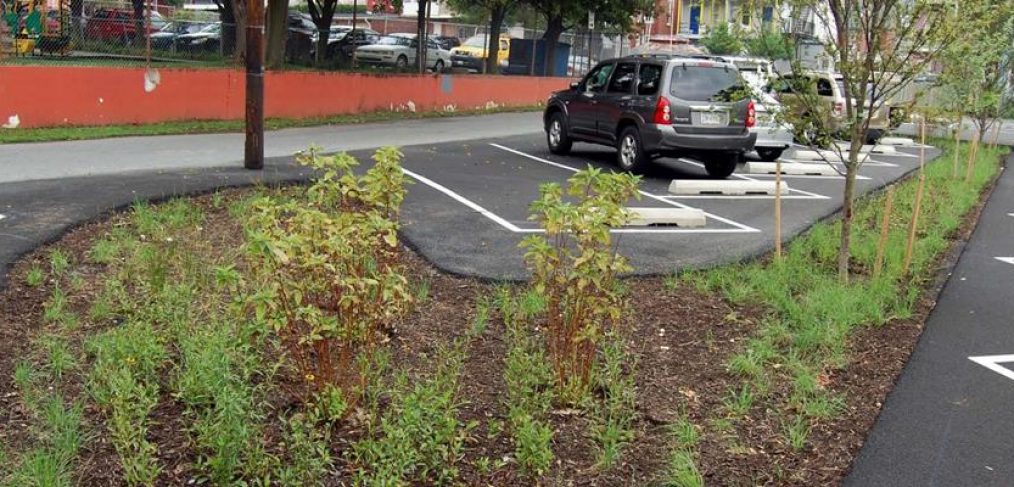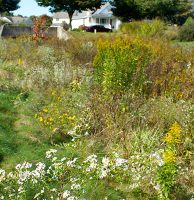
The Hows and Whys of Stormwater BMP Maintenance
The Stormwater Equipment Manufacturers Association (SWEMA) and the Chesapeake Stormwater Network found through separate studies that many (i.e. more than 50%) municipalities have no stormwater best management practices (BMP) maintenance program in place, and in many cases didn’t even know what BMPs were or whether any were installed in their communities. That is a problem! What you don’t routinely take care of can easily fall into disrepair. This article discusses how to maintain BMPs so that they function properly for their intended lifespan.
Why Maintenance Matters
Why spend lots of money installing a BMP to treat your stormwater issues, only to have it fail a year or more in the future? BMPs can fail for a variety of reasons if they are not maintained:
- Sediment build-up
- Trash and debris build-up
- Ponding water that leads to mosquito and disease concerns
- Unruly and unsightly vegetation growth
- Broken pipes
- And many more!
Instituting a strategy for routine stormwater BMP maintenance before the BMP is even put in the ground will better ensure the long-term success and lifespan of the BMP.
Develop an Ordinance to Ensure Consistency
The first step of any efficient BMP maintenance program is to make sure that inspection and maintenance is actually being done. The SWEMA developed a Draft BMP Maintenance Ordinance, which can be modified to incorporate relevant state and local requirements, to “promote health, safety, resource conservation, and environmental stewardship within communities, jurisdictions, and watersheds by minimizing non-source pollutants”.
The ordinance helps municipalities ensure their inspection cycle and maintenance or repair schedule for stormwater BMPs is routine and well-structured. As was discussed in an earlier posting from LandStudies, regular inspection and maintenance of BMPs and other on-the-ground projects should prevent malfunctions and ensure proper function. Both the SWEMA and LandStudies urge municipalities to adopt a stormwater ordinance that includes BMP inspection and maintenance. A copy of the ordinance can be obtained at www.stormwaterassociation.com.
Why is the Ordinance Important?
The ordinance template makes sure that inspections and maintenance are being done by requiring a one-year maintenance bid item into the bid document for the post-construction BMP project. By implementing this from the start of a project, the BMP owner is kept aware of the need for maintenance to be in compliance with their construction permit, thereby eliminating the “out of sight, out of mind” mentality.
What’s Next? Build the Maintenance Program
Many Pennsylvania municipalities are strapped for cash, but that doesn’t mean they can’t create an effective stormwater BMP maintenance program on a shoe-string budget. The following recommendations are adapted from a presentation of the Chesapeake Stormwater Network and will help municipalities of any size craft an effective maintenance program.
- Reduce future headaches by making sure the BMPs are designed and installed properly – AND that they are the right BMP for the site and the stormwater situation. Review the plan multiple times, ask questions, ask for changes when needed, and review again. This may help avoid mistakes that will lead to costly maintenance or replacement in the future.
- Will an easement be needed to access the BMP for routine maintenance? If so, make sure it spells out how often access will be needed/granted, who will have access, etc. Maintenance can’t happen if you can’t unlock the gate to get at the BMP.
- Inspect the site during and after construction, know what to look for, and be tough if things don’t look right. Demand changes if things aren’t done to plan. Otherwise, future maintenance may be more than you bargained for.
- Use maintenance agreements and bonds to ensure that the work is done correctly. We can’t say it enough… the more time you put into inspecting the project throughout the process the less burdensome maintenance should be in the future.
- Did we mention inspect the site on a regular basis?! Do so annually at a minimum once the project is complete, but after large storm events is also recommended.
- If a problem with the BMP is found during an inspection, particularly if you think it is due to a lack of maintenance or improper technique, try to educate the person first. If that doesn’t work, then have a plan in place for taking corrective actions and enforcement procedures.
- Use technology like GPS, GIS, and computer-based systems to track data on the BMPs – when they were maintained, how, photos of what it looks like, location, any violations, etc. You can also use this tech to track the performance of the BMPs.
- Develop a maintenance triage system for those times when routine maintenance fails to prevent a problem from occurring. This may occur during/after a significant storm or as the BMP ages.
- Continue to educate municipal staff, the public, and anyone else that might come in contact with the BMP and/or stormwater about the function of the BMPs, their importance, and the value of routine maintenance.
It may sound like a lot of work to craft a stormwater BMP maintenance program, but the real work (and money) comes if you don’t. As they say, an ounce of prevention is worth a pound of cure.


